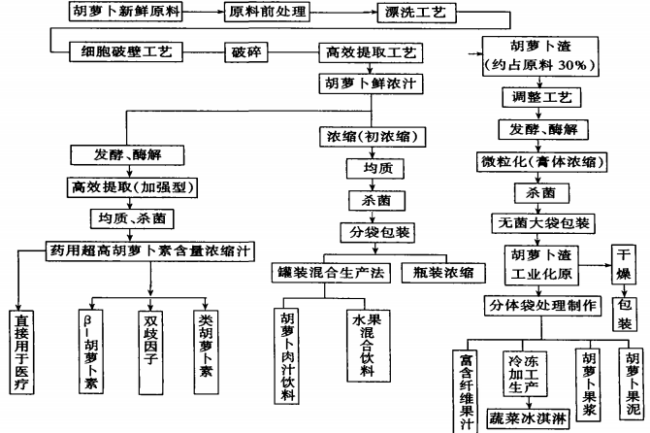Analysis of carrot and its cultivation development
Carrot is one of the most common nutritious vegetables, belongs to two-year herbaceous crops, its shape is pinnately compound leaves, small white flowers, the fruit is oblong type, the root is long conical type, because the root is fleshy concentrating the main nutritious part of the plant, so the edible part of carrot is in the root, and the root has various colors such as purple red, orange red, yellow and so on.
Carrot is a semi-cold crop, like cold, at an altitude of 1000-1500m, the average annual temperature of 3 ~ 7 ℃ of the climate of the cool areas are suitable for seeding, carrot in the seedling and root expansion period need to be watered, but than the fruit vegetables to save more than 50% of the water, the soil requirements for sandy loam and light loam, black calcium, etc., fertilizers require organic fertilizers, therefore, carrot soil requirements are low.
The main nutrients of carrot
The main nutrient of carrot is carotene, research shows that the content of carotene is as high as 9-13mg/lO0g. Carotene, also known as lutein, is an organic compound, the finished product is dark purple or dark red crystals, carotene in the body can become vitamin A. Carrot is also a large number of carotenoids in the body.
Carrots also contain a large number of carotenoids, bifidogenic factors and nucleic acid substances, these substances for the enhancement of immunity, reduce oxygen free damage, anti-mutagenesis, protection of the intestinal mucosa, proliferation of intestinal probiotics have a unique therapeutic effect. In addition, because the carrot is root food, in the soil absorption of minerals and trace elements necessary for human growth, but also richer than other vegetables, such as in the nationally renowned selenium-rich areas – Enshi Autonomous Prefecture, by the assay, the carrot’s content of selenium amounted to 0.5 ppm, higher than the same area of the other vegetables and fruits 0.2 ~ 0.3 ppm.
It can be seen that the carrot as the main nutrient carotene, both containing a variety of nutrients necessary for human growth and development, but also has many special pharmacological effects, carotene and its high concentration of carrot juice, in preventive medicine and clinical medicine and military medicine, the application of a wide range of applications and needs.
Processing and development of natural carrot food
Throughout the current domestic research on carrot processing and development, the processing and development of carrot is mainly in the following 2 aspects:
3.1 It is directly processed into health drinks and concentrated food.
Such as carrot extract, carrot sauce puree, etc., this kind of development belongs to the direct processing, low cost, technology requirements are not high, the market potential, the products developed can be used as health drinks and condiments food, but also as a further deep processing of a carotene extraction and “carrot intestinal micro-ecological regulator” and other preventive and clinical medicine raw materials. Raw materials, its prospects are very broad.
Direct processing and production of carrot health food, beverage, there are great limitations. First, in terms of taste, there is still a certain degree of obscurity, with its processing of juice, taste than a variety of fruit juice.
This undoubtedly affects the carrot processed food market share, carrot extract of industrial raw materials processing technology and equipment has not yet kept pace with the current international carrot juicing process extends the use of fruit juicing products and equipment, this technology and equipment is only applicable to the thin cells of the fruit pulp and the extraction of soluble ingredients as the goal of the juice concentrate products, and carrots belong to the roots of vegetables, interstitial cells developed, solid cell walls, carotene is a fat-soluble ingredient, the carrot is a fat-soluble ingredient, the carrot is a fat-soluble ingredient. Carotene is a fat-soluble component rather than a water-soluble component, and the historical fruit processing techniques and equipment used to process carrots make the extraction rate of carotene lower.
3.2 Carrot medicinal products processing – β-carotene extraction
The “high efficiency stage” of carrot processing is to extract β-carotene from carrot juice concentrate as raw material. At present, most of the β-carotene used in the international market are chemically synthesized carotene tablets, and research shows that pure chemical preparations are fundamentally different from natural food rich in this substance, and the functions of natural food are often the result of the synthesis of its own substances, so in the case of taking carotenoid tablets that do not help to prevent cancer, the extraction of β-carotene from natural carrot juice has a huge market potential. Therefore, the extraction of β-carotene from natural carrot juice has a huge market potential. This process is still under further development.
Attachment: Carrot Processing Flow

